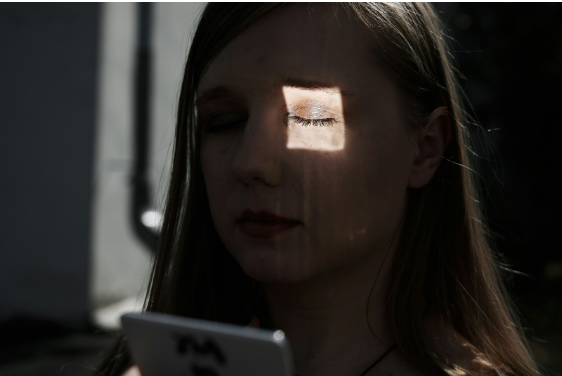
Deepfake Examples Across Industries: From Entertainment to Fraud
Artificial intelligence is a very bright innovation but it has created new problems. Among the most conspicuous and provocative applications of AI is the production of deepfakes, hyper-realistic videos, pictures, or audio files created by the algorithm that makes individuals appear to do or say something that they never did.
Although deepfakes were originally introduced as a new technology to entertain and create something new, the fact that they are used in fraud, misinformation, and bullying has become a serious issue. In this article, we will see real-life cases of deepfake implementation in different industries and how they are being used positively and how they may harm.
What is Deepfake?
Deepfakes are artificial media whose production involves AI models (generative adversarial networks (GANs)). These applications process and teach using actual footage or audio to create a convincing digital copy of the appearance of a person or voice.
Despite the fact that not all deepfakes are meant to do harm, others are quite amazing feats of technology.
Others have been turned into weapons of evil – financial fraud, defamation.
Entertainment Deepfake Examples
1. Bringing Dead Actors to Life
Hollywood has adopted deepfake technology as a way of resurrecting actors who have died.
As an example, the character Grand Moff Tarkin featured in Rogue One: A Star Wars Story (2016) was rendered via CGI and deepfake-like technology, resurrecting the late Peter Cushing on film. In the same vein, Fast & Furious 7 digitally resurrected Paul Walker when he died unexpectedly.
These deepfake examples show how they can be used to improve storytelling and enable filmmakers to realize creative visions they have never been able to realize.
2. Face-Swapping Applications and Viral Media
The face-swapping applications, such as Reface or Zao, have become viral, and people can apply their photos to the movies, music videos, or memes.
These applications employ simplified technologies of deepfakes to amuse millions of users and demonstrated that media manipulation driven by AI can be entertaining and accessible to many people.
Politics and Misinformation Deepfake Examples
1. Rigged Political Videos
Political misinformation campaigns are among the most disturbing applications of deepfakes.
A 2018 deepfake video of former U.S. president Barack Obama was released online, in which he said things he never said; it was a project of Buzzfeed and filmmaker Jordan Peele to alert people to the danger of deepfakes.
In the most recent development, deepfake versions of world leaders such as Ukrainian President Volodymyr Zelenskyy have been shared, which pretended to show him calling on his troops to surrender, a clear indication of how deepfakes can be used in psychological warfare.
Deepfake Cases of Fraud and Cybercrime
1. Voice-Cloning Scams
Deepfake voice has also allowed lawbreakers to imitate the voices of CEOs or executives and fool employees into transferring money.
In at least one high-profile case in 2019, the scammers created an audio file using AI to fool a victim into believing that it was a CEO of their company, and tricked an employee at a U.K. energy firm into sending to their account 220000 euros.
These are the cases that highlight an increasing threat of deepfakes in business email compromise schemes and corporate fraud.
2. Manipulation of the Financial Market
In 2020, a deepfake video of a CEO making erroneous claims about his or her company was shared on the internet, which temporarily impacted the stock price. It demonstrates that deepfakes have the potential to destabilize the financial markets and investor trust.
Harassment and Privacy Violation Deepfake Examples
1. Deepfake Pornography That is Non-Consensual
The non-consensual explicit video is one of the most detrimental applications of deepfakes.
Victims mostly women have found themselves exposed online to fabricated pornographic materials with their images and reputation damaged and emotionally distressed.
The existence of this dark side of the technology has created the need to push forward the development of stricter law and platforms to assume greater responsibility in picking up and eliminating such content.
Positive Scenarios of Deepfake Technology
It is necessary to add that not every deepfake is bad. They are also utilized in a positive way, e.g.:
Education and Training: Designing of medical training simulations or corporate role-playing games.
Accessibility: The synthesis of speech in the case of illnesses that lend someone their voice.
Marketing: AI-generated video messages to the customers, with an individual approach.
These are some of the positive applications indicating that deepfakes are not necessarily bad, but their misuse is.
Our Task in the Future
The above examples show that the deepfake technology is a two-edged weapon. The more it becomes sophisticated and available, the more it is capable of causing harm as well as creative and practical uses.
The risks should be reduced by governments, businesses, and individuals that should invest in media literacy, detection tools, and regulatory frameworks. Deepfake detection systems based on AI, using watermarks on genuine media, and tighter legislation on the malicious application of deepfakes are all measures in the right direction.
Read Also: Tunnel Radio Technology Advancements for Underground Mines
Conclusion
Whether it is blockbuster films or viral memes, financial scam or harassment, deepfakes are leaving their mark in industries and society as a whole. The fact that they are able to blur the boundaries between reality and fiction presents ethical and security dilemmas that can not be disregarded.
The balancing of the creative possibilities of the technology and the necessity to make sure that it is not used injuriously in any way would be one of the tasks of digital age as the technology evolves.




